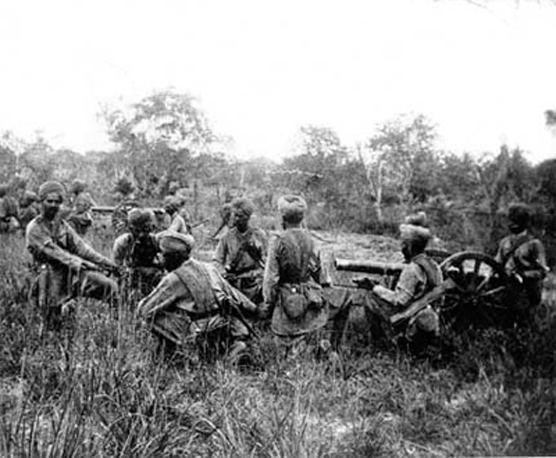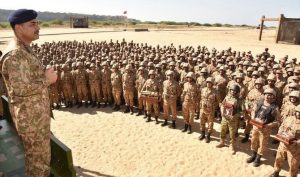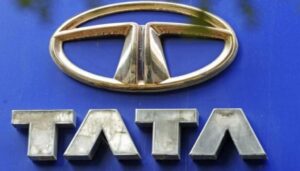October 1947 – December 1948- SAVING KASHMIR: The Indo-Pak War of Kashmir

Col Ajay Singh, Veteran
Pune: In August 1947, when India and Pakistan got their bloodied independence, the situation was stark. In an attempt to get Kashmir by force, Pakistan had sent armed tribesmen led by officers of the army to capture the State. As the raiders raped and pillaged their way through the beautiful state, Maharaja Hari Singh acceded to India and the Indian army arrived in Srinagar on 27th October 1947. Their arrival saved the state from falling into Pakistani hands. (See ‘The Race to Srinagar)
As 1 SIKH, the first unit to land in Kashmir delayed the invaders on the outskirts of Srinagar, reinforcements flew in. 161 Infantry Brigade under Brig J C Katoch arrived on 29 Oct with 1 KUMAON, 4 KUMAON, 1 PUNJAB and 6 RAJRIF. Its arrival was inauspicious. The commander was wounded on 02 November and Brigadier L P Sen (‘Bogie’ Sen) took over. At that time the situation was grave. Srinagar was surrounded by around 10,000 baying tribesmen with around 5000 approaching from Pattan in the West, around 2500 coming in from Sopore in the North and another 1500 or so approaching from Gulmarg in the south. Brigadier Sen decided to keep one battalion (6 RAJRIF) for the defence of Srinagar, 4 KUMAON to defend the airfield and use the other two battalions to deal with the approaching enemy. The arrival of two troops of howitzers, and a troop of Armoured Cars from 7 CAV boosted their meagre firepower considerably.
As the troops were just gearing up for their role, a report was received on 02 November that around 700-1000 tribals were seen near Bagdam villages moving towards the airfield. A force under Major Somnath Sharma was sent towards Bagdam and he occupied a defensive position there with one company by morning of 03 November. By 1500 a force of around 700 tribesmen approached and surrounded the position on three sides. Major Sharma realized that if he withdrew, the way would be open for the city of Srinagar and the airfield. Outnumbered seven to one the force held on grimly. Maj Sharma, his hand in plaster with a hockey injury he had received even before they had set out, went around the post , galvanizing his men, filling ammunition magazines, firing and encouraging his men to hold firm till he was killed by a mortar bomb that exploded just behind him, his last message to the brigade Headquarters was :-

‘The enemy is 50 yards from us. We are heavily outnumbered, but I will not withdraw one inch but fight to the last man last round.’
Major Sharma’s gallant stand inflicted over 200 casualties on the enemy and also injured their leader. It delayed their advance by over 24 hours – valuable time gained to help prepare the defences of Srinagar. He himself became the first recipient of India’s highest gallantry award – the Param Vir Chakra.
Srinagar was in peril and Sardar Vallabhai Patel himself flew in to emphasize the urgency of holding on at all costs. Brigadier Sen decided to move his units closer to Srinagar. Meanwhile an aerial reconnaissance showed a force of around 3000 heavily armed raiders assembling at Shalateng – around 7 kilometers away – with their vehicles parked alongside the road. Brig Sen had two options. He could hold firm hoping that the promised reinforcements would arrive, or he could attack with what little forces he had at his disposal. He chose to attack and that decision shaped the war.

Using one battalion (1 SIKH) to hold the enemy, he encircled the force with two battalions moving stealthily from two directions. A troop of Armoured Cars on a mounted patrol in the vicinity was also called in to close in from the rear of the enemy. Not expecting an attack, the enemy were taken by surprise as they were hemmed in and surrounded by fire on all sides. Caught out in the open in a freshly ploughed field with their vehicles and much of their heavy weapons parked some distance away, the raiders were virtually massacred and the remnants fled back towards Baramula. They were pursued relentlessly, and fired on by air. 472 bodies were recovered at Shalateng and a further 146 on the road to Baramula. The victory at Shalateng now inflicted a decisive defeat to the raiders and brought an end to their offensive towards Srinagar. From now on the enemy was on the defensive and the Indian army rapidly capitalized on this victory. Barmula was recaptured, then Uri and the army was all poised to recapture Domel and Muzaffarabad and push the enemy back into Pakistan.
It was then that a grave situation developed in the South, in the Jammu Sector.

The Pakistanis had accompanied their main thrust towards Srinagar with a complementary offensive in the South. A force of around 10,000 Lashkars moved towards the Jammu Sector capturing the towns of Mirpur, Bhimber and Mendher in their wake. The same carnage that was witnessed in Muzaffarabad, Uri and Baramula was revisited here, as the raiders went berserk in the hapless citizens of the towns. Poonch, the largest town in the area was under threat as well. 161 Brigade which was making spectacular gains in the Srinagar sector and was now ordered to move towards the South and help reinforce Poonch. One battalion (1 KUMAON under Lt Col Pritam Singh) was sent on foot to enter the town and defend it. Under Col Pritam Singh , Poonch witnessed numerous attacks, and though besieged on all sides was maintained by air and held on for over a year till it relieved by an Indian offensive in November 1948.
The Indian situation in the Jammu Sector was as perilous as it had been at Srinagar a month ago. The defence in this area was entrusted to 50 Para Brigade under Brigadier Mohammed Usman. (Like so many patriotic Indian Muslims he refused to join Pakistan, even though he was promised the position of Chief subsequently). The enemy pushed forward capturing Jhangar and Rajauri were on the outskirts of Naushera. Naushera held the key to this sector. If it fell, Jammu would be within striking range. Brigadier Usman placed his battalions on the high ground around the town and his brigade was subjected to frenzied attacks by around 20,000 tribesmen from 05-08 Feb 48. In spite of seven attacks the brigade held firm, fighting back the enemy in some of the bloodiest close combat battles of the war. When the fighting subsided around 10 Feb or so the enemy withdrew leaving behind over 2000 dead around the heights of Naushera. This was a major victory and put paid to the enemy’s offensive plans towards Jammu.
With the two victories of Shalateng and Naushera under its belt, the Indian army went on the offensive. In the Spring of 1948 , Jhangar and Rajauri were recaptured. In the North the Indian Army moved towards Domel. By now the Pakistani army had given up all pretense of merely using tribesmen and the regular army was occupying most positions. Each hill feature, each town and village had to be won at a high cost, after grim battles. Yet slowly the Indian army began recovering most of its lost territories. It was poised to move up to Muzafarrabad – the start point of the Pakistani offensive and push the Pakistanis back where they started when Nehru made the ill-conceived decision to go to the United Nations at a time when the Indian Army was well and truly on the ascendency. On 10 July, the government ordered a halt to our counter-offensive and the guns fell silent. Well almost silent. Firing and sporadic battles erupted for much of the year. The areas held by both sides would become the Line of Control – a violent jagged line that divided the two sides and even today erupts with painful regularity. India ended up with control of two thirds of the State, including the prized valley. Pakistan held on to one third. But the unresolved war of 1947-48 laid the seeds for conflict in 1965, 71 and 1999 and led to seven decades of mistrust and unrest that continues to this day.









